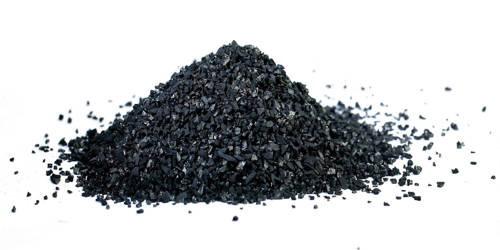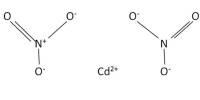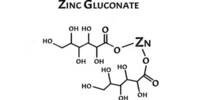Activated carbon, also called activated charcoal, is a form of carbon processed to have small, low-volume pores that increase the surface area available for adsorption or chemical reactions. It has an incredibly large surface area per unit volume and a network of submicroscopic pores where adsorption takes place. It is used to purify liquids and gases in a variety of applications, including municipal drinking water, food and beverage processing, odor removal, industrial pollution control. The carbon-based material is converted to activated carbon through physical modification and thermal decomposition in a furnace, under a controlled atmosphere and temperature.
Activated carbon is produced from carbonaceous source materials, such as coconuts, nutshells, coal, peat, and wood. Due to its high degree of microporosity, one gram of activated carbon has a surface area in excess of 3,000 m2 (32,000 sq ft) as determined by gas adsorption. An activation level sufficient for useful applications may be obtained solely from the high surface area. The finished product has a large surface area per unit volume and a network of submicroscopic pores where adsorption takes place. Further chemical treatment often enhances adsorption properties.
Activated carbon is usually derived from charcoal. When derived from coal it is referred to as activated coal. Activated coke is derived from coke. Contaminants that are organic, have high molecular weights, and are neutral, or non-polar, in their chemical nature are readily adsorbed on activated carbon.
Uses
Activated carbon is used in methane and hydrogen storage, air purification, solvent recovery, decaffeination, gold purification, metal extraction, water purification, medicine, sewage treatment, air filters in gas masks and respirators, filters in compressed air, teeth whitening, production of hydrogen chloride in dark and many other applications. They are different because of the starting material and manufacturing methods. While activated carbon is very useful for applications such as municipal water treatment, it is important for the user to solicit the product information and pricing from the activated carbon provider, ensuring that the best possible choice is made for the application
Industrial application
One major industrial application involves the use of activated carbon in metal finishing for purification of electroplating solutions. For example, it is the main purification technique for removing organic impurities from bright nickel plating solutions. A variety of organic chemicals are added to plating solutions for improving their deposit qualities and for enhancing properties like brightness, smoothness, ductility, etc. Activated carbon treatment removes such impurities and restores plating performance to the desired level.
Medical uses
Activated carbon is used to treat poisonings and overdoses following oral ingestion. Tablets or capsules of activated carbon are used in many countries as an over-the-counter drug to treat diarrhea, indigestion, and flatulence. It is sometimes used to help treat drug overdose or poisoning.
However, activated charcoal shows no effect on intestinal gas and diarrhea, and is, ordinarily, medically ineffective if poisoning resulted from ingestion of corrosive agents such as alkalis and strong acids, iron, boric acid, lithium, petroleum products, or alcohol. It is treated physically or chemically to generate microfissures that vastly increase its adsorptive surface area. Activated carbon will not prevent these chemicals from being absorbed into the human body.
















